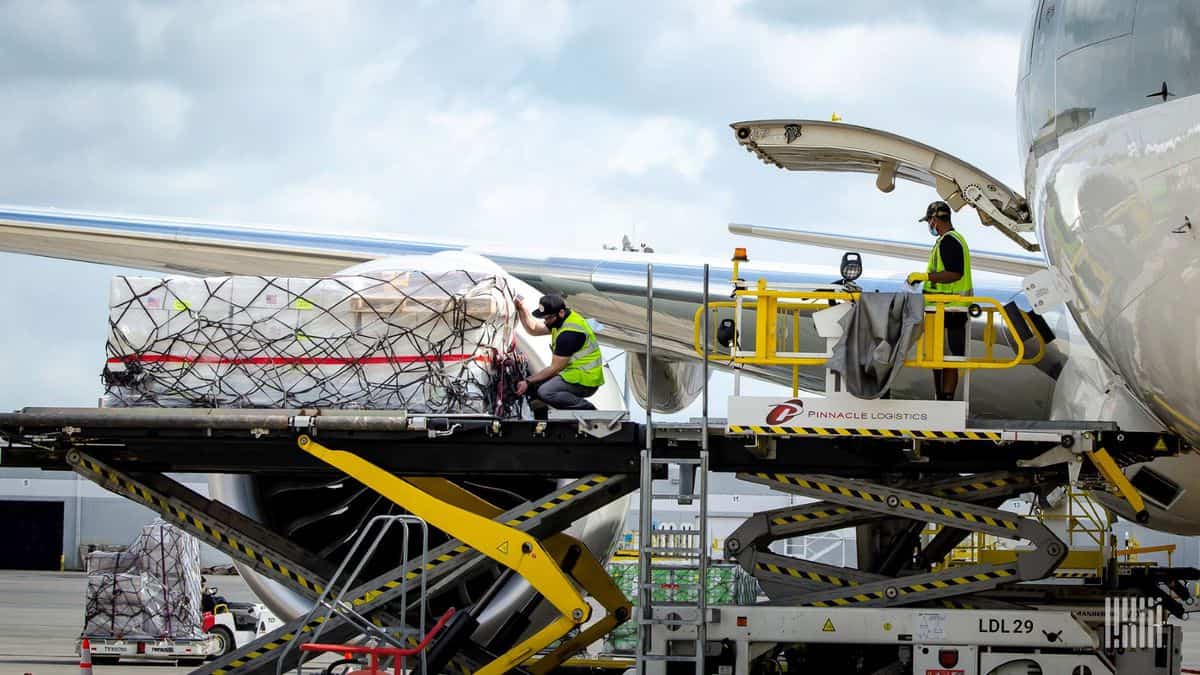Air cargo throughput shrank more than 18% in the first half of 2020, but revenue from airline cargo operations grew almost 21% because the scarcity of available aircraft led to significantly higher rates, according to data compiled by World ACD.
The figures dovetail with a June estimate from the International Air Transport Association that global cargo revenues will increase $8 billion from last year despite a 16.8% decrease in tonnage associated with decreased economic activity caused by the coronavirus pandemic.
World ACD said outbound traffic from the Asia-Pacific to Europe and North America was impacted the least by the coronavirus crisis, down 6% and 11% respectively compared to the first six months of 2019. Air exports from the region to the Middle East and South Asia fell 15%.
However, air shipments out of China stayed flat year-over-year due to the enormous global demand for personal protective equipment that resulted in governments and logistics providers booking entire plane loads, often squeezing out other commodities in the process. But shippers paid dearly for those freighters, with cargo rates 136% higher for the six-month period than the prior year. During the peak surge in April and early May, as previously reported, outbound China rates were close to $20 per kilogram – a five-to-sixfold increase from normal peak periods.
The average rate of transporting one kilogram by air increased 48% worldwide, with the biggest jump, 76%, on shipments from the Asia-Pacific. Rates increased the least, 10%, for exports originating in Latin America.
In other areas of the world, originating volume dropped 32% from the Middle East and South Asia and 22% from Europe, according to the Amsterdam-based information service firm.

(Source: World ACD)
WorldACD, which collects data from airlines under confidential arrangements, said the volume of flower shipments fell 16%, while high tech shipments were only down 6%. The big gainer during the health crisis has been pharmaceuticals volumes, which grew 8% during the period.
On a month-over-month basis, global air cargo volumes increased almost 3.5% in June from May. However, yields dropped 21% last month, pushing airline revenues down 19% – an indication that the capacity crunch has eased over the past two months.
Lower unit revenues are one explanation for why some passenger airlines on trans-Pacific lanes have reduced substituting aircraft for dedicated cargo service. The so-called “ghost” flights – no passengers on board – can’t make as much money as a pure freighter to cover their operating costs because they don’t have the same amount of space for revenue-generating payloads, industry specialists say.
But the drop in airfreight rates could be temporary. Prices to ship by air from China and Hong Kong are rising again and heightened demand for medical supplies and other commodities are expected to squeeze capacity again in the coming weeks.
World ACD cautioned that the airfreight market hasn’t fully normalized, noting that June volumes on an annual basis were still 20% below last year’s level while per unit revenue was 76% higher. And early data from July shows yields only softened 2.4% since the last week of June.
Click here for more FreightWaves/American Shipper stories by Eric Kulisch.
RECOMMENDED READING:
Outbound airfreight market tightens from China, Hong Kong










